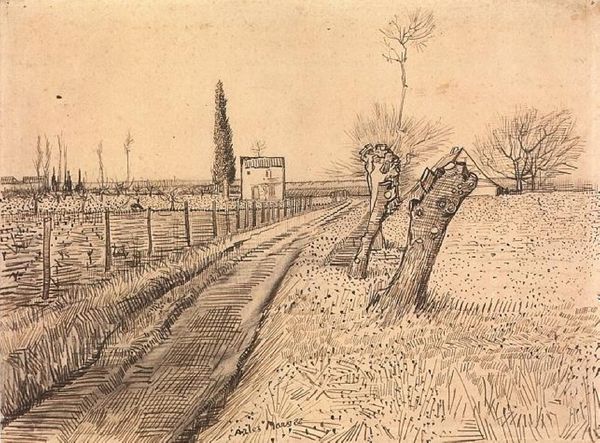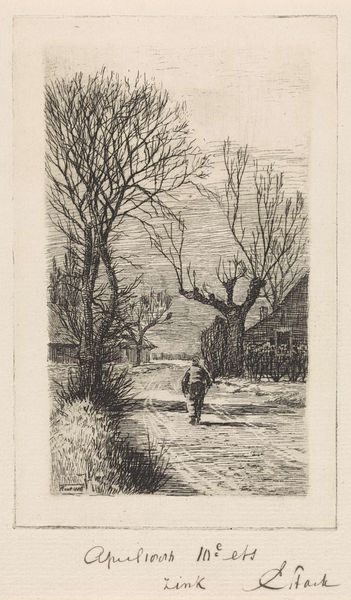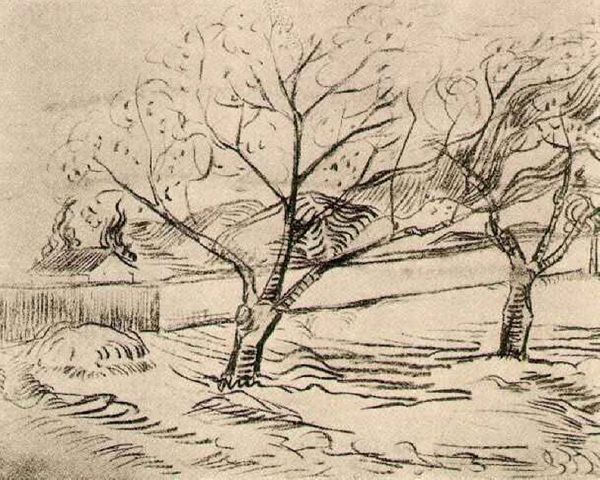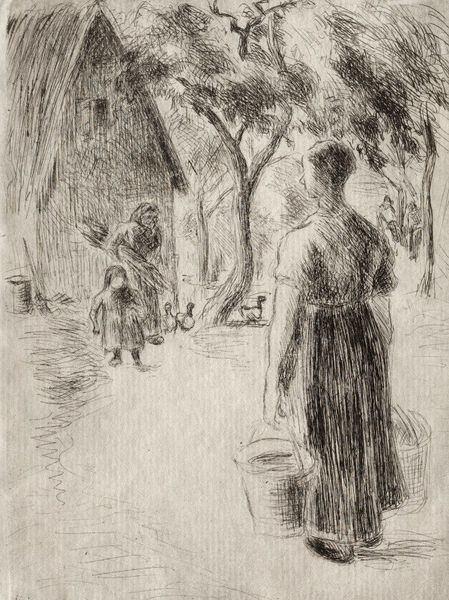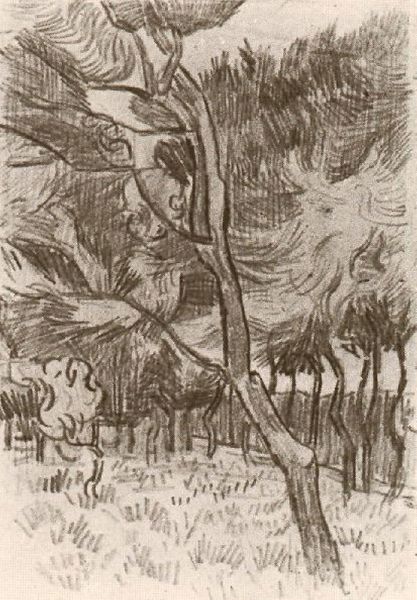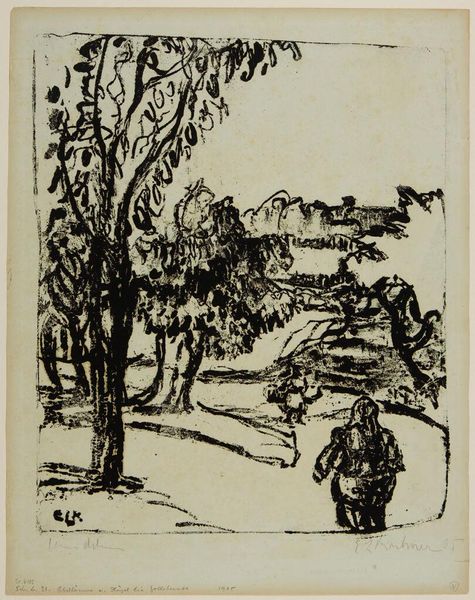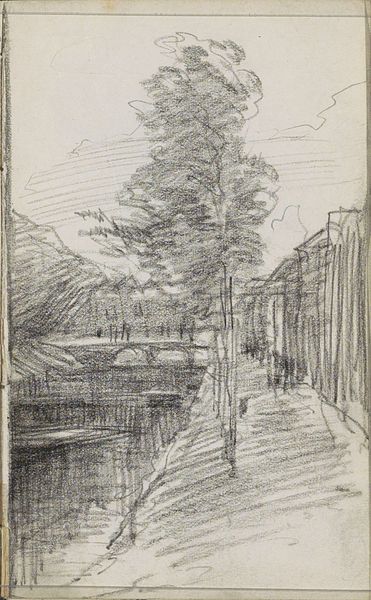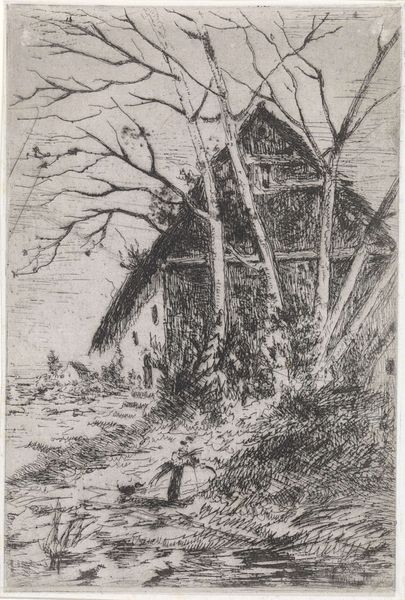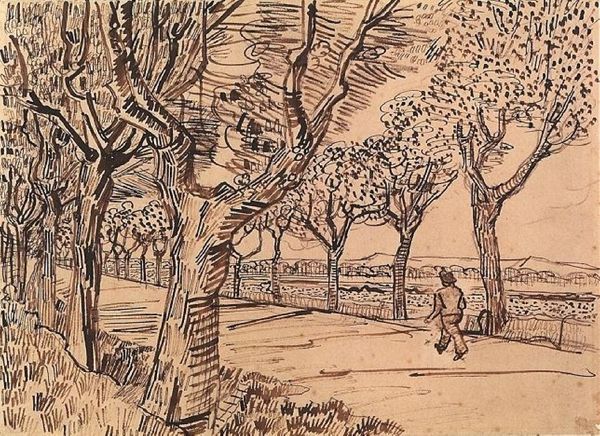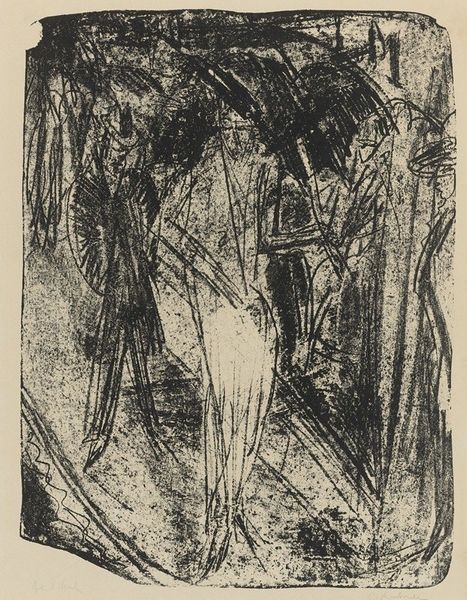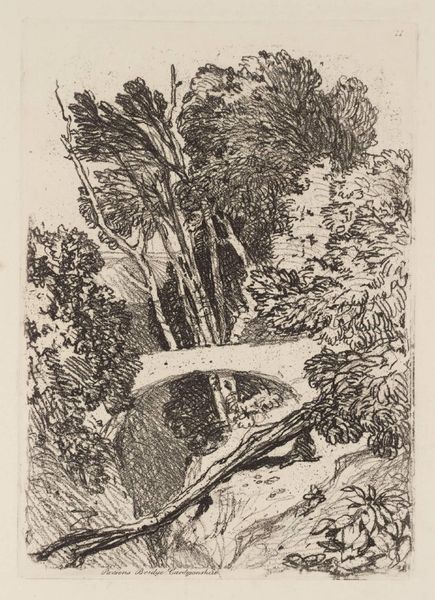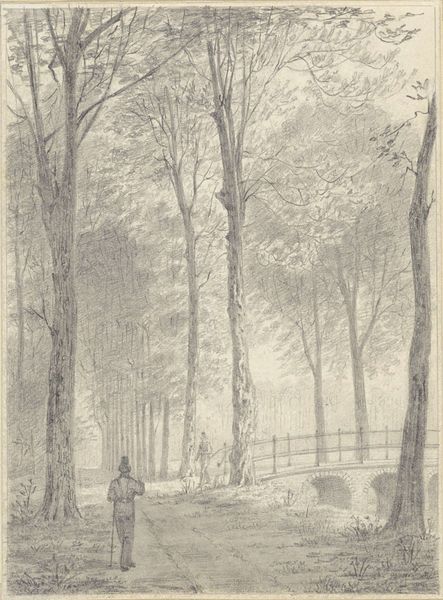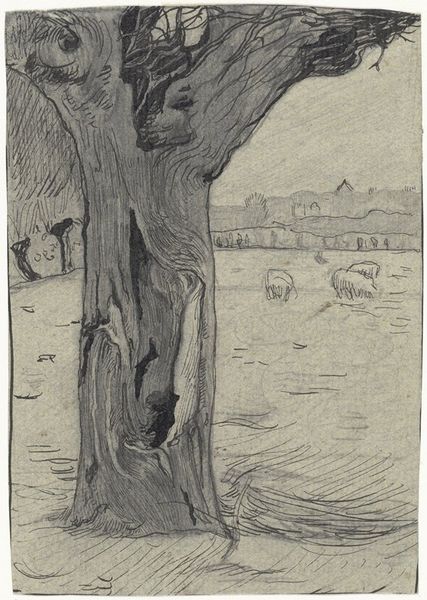
drawing, ink, pen
#
tree
#
drawing
#
garden
#
ink drawing
#
impressionism
#
pen sketch
#
pencil sketch
#
landscape
#
ink
#
line
#
pen
#
realism
Copyright: Public domain
Curator: Let’s turn our attention to this pen and ink drawing by Vincent van Gogh, titled "Road with Pollard Willows," created in 1881. Editor: Stark. That's the immediate word that comes to mind. The black ink on the paper, those looming trees… it's an almost oppressive scene. Curator: It was produced early in his career, when he was living in Etten, in the Netherlands. The drawing exemplifies a commitment to capturing the realities of rural life. One wonders, how was van Gogh viewing his place in this world? Editor: Look at the roughness of the lines, the almost violent hatching to create shadow. This speaks volumes about process and intention. What inks did he have access to, what pens? I bet they weren't fine art supplies. This impacts our view; we might even be looking at locally sourced or produced inks! This artwork exists in a real socio-economic setting and shouldn't be viewed outside that lens. Curator: Indeed. There's a distinct emphasis on the everyday here, aligning with the Realist movement’s focus on depicting the lives of ordinary people, even in the act of processing materials and tools for image making. Van Gogh uses the trees, a recurring subject, almost as a framing device. He returns to his landscape often. Editor: Exactly, there is so much the trees can offer here. The act of pollarding itself, this heavy pruning to encourage growth, reflects the human impact and manipulation of the natural world, for both aesthetic and resource purposes, especially when firewood might have been sold at market to buy painting and drawing tools! The social dynamic is everywhere here. Curator: And observe how that lone figure walking down the road shrinks beneath their presence. It’s as though Van Gogh is underscoring the might and indifferent scope of his landscape, both to others, and within his own inner, imagined landscape. Editor: Well, considering all those facets together gives us, I think, a more truthful understanding of both Van Gogh, the artwork, and the world that the drawing grew from, a real, material place. Curator: Ultimately, examining Van Gogh's artistic choices against the backdrop of the cultural and social conditions that shaped his work, we begin to interpret and understand the historical climate of this landscape as Van Gogh depicts it.
Comments
No comments
Be the first to comment and join the conversation on the ultimate creative platform.
